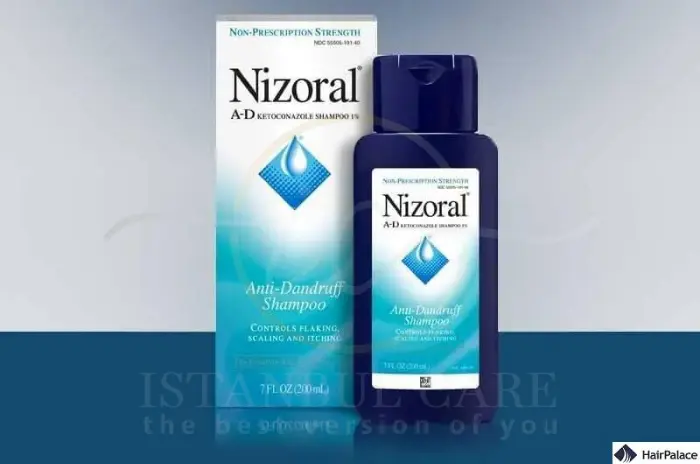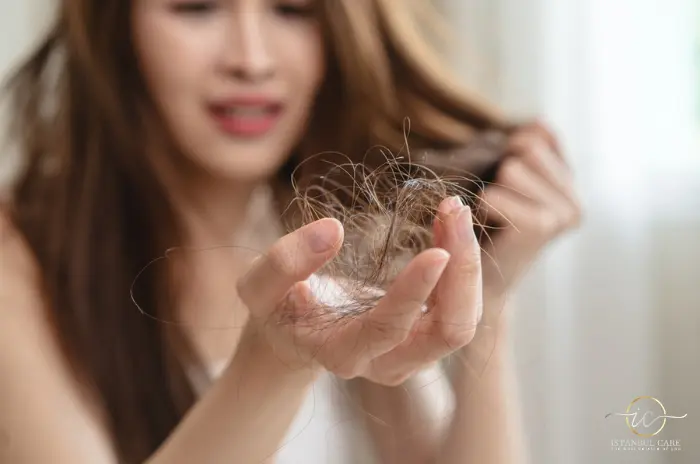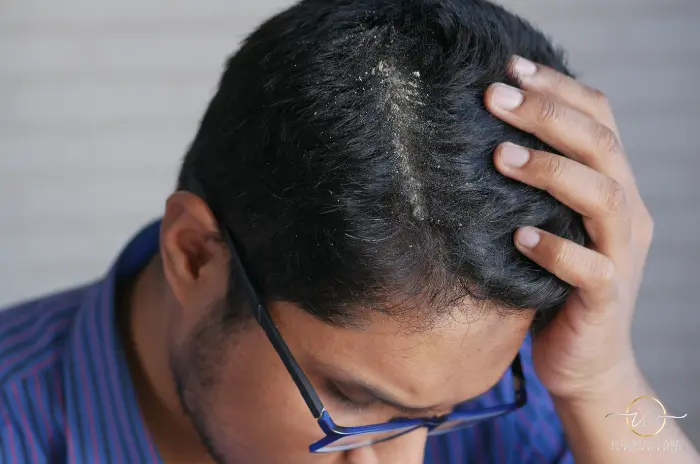Hair loss affects millions of people worldwide, leading many to explore various treatment options beyond traditional medications. Nizoral Shampoo for Hair Loss has emerged as a popular choice for those seeking to address pattern hair loss and hair thinning. This antifungal shampoo contains ketoconazole, an active ingredient that may offer benefits for both dandruff and hair loss concerns.
Understanding how Nizoral shampoo treat hair issues requires examining its mechanism of action and comparing it to other established treatments. While primarily marketed for dandruff and scalp fungal infection, research suggests that ketoconazole shampoo may play a role in supporting hair health through its anti-androgenic properties.

What Is Nizoral Shampoo and How Does It Work?
Nizoral shampoo is an over-the-counter antifungal treatment containing ketoconazole as its primary active ingredient. Originally developed to combat dandruff and seborrheic dermatitis, this medicated shampoo has gained attention in the hair loss community for its potential benefits in treating androgenetic alopecia.
The shampoo works by targeting fungal organisms on the scalp while potentially interfering with hormone-related hair loss processes. Unlike traditional hair loss treatments that focus solely on blood flow or hormone blocking, Nizoral approaches the problem from multiple angles.
The active ingredient: Ketoconazole’s role in hair health
Ketoconazole functions as both an antifungal agent and a potential DHT hair loss treatment. This compound inhibits the enzyme 5-alpha reductase, which converts testosterone into dihydrotestosterone (DHT). Since DHT is the primary hormone responsible for pattern hair loss, reducing its production or activity on the scalp may help preserve existing hair follicles.
Research indicates that ketoconazole can penetrate the hair follicle and remain active for several days after application. This sustained presence allows the ingredient to continuously work against both fungal infections and potentially harmful hormone activity.
Nizoral shampoo for dandruff vs. hair loss
While Nizoral for hair loss represents an off-label use, the shampoo’s primary indication remains treating dandruff and seborrheic dermatitis. The concentration and frequency of use may differ depending on the intended purpose.
For dandruff treatment, users typically apply the shampoo 2-3 times per week until symptoms improve. However, those using Nizoral for hair loss often incorporate it into a broader treatment regimen that may include other therapies.
Does Nizoral shampoo work for hair loss?
The effectiveness of Nizoral shampoo for hair loss has been studied in several clinical trials, though the evidence remains somewhat limited compared to established treatments like minoxidil and finasteride. Available research suggests modest benefits, particularly when used as part of a comprehensive treatment approach.
Studies have shown that ketoconazole shampoo may help reduce hair shedding and improve hair density in some individuals with androgenetic alopecia. However, the results are generally less dramatic than those seen with proven hair growth medications.
How ketoconazole fights DHT and scalp fungus
Does Nizoral block DHT? The answer is somewhat complex. While ketoconazole doesn’t directly block DHT like finasteride, it may interfere with DHT production and activity at the follicular level. The mechanism involves inhibiting 5-alpha reductase enzyme activity in hair follicles.
Additionally, by addressing scalp fungal infection and inflammation, Nizoral may create a healthier environment for hair growth. Chronic scalp inflammation can contribute to hair follicle miniaturization and accelerated hair loss.
Evidence for Nizoral in male and female hair thinning
Clinical studies have examined Nizoral hair thinning effects in both men and women. A notable study comparing 2% ketoconazole shampoo to 2% minoxidil found that while minoxidil was more effective, ketoconazole still produced meaningful improvements in hair density and growth.
Female participants in some studies have reported positive outcomes when using ketoconazole shampoo for hair thinning, though more research is needed to establish optimal protocols for women.
How does Nizoral shampoo help treat hair loss?
The potential mechanisms by which Nizoral shampoo may help with hair loss involve both direct and indirect pathways. Understanding these mechanisms helps explain why some individuals experience benefits while others see minimal improvement.
The primary benefit appears to stem from ketoconazole’s anti-androgenic properties, which may help counteract the effects of DHT on susceptible hair follicles. This action could potentially slow the progression of pattern hair loss and preserve existing hair.
Blocking DHT by inhibiting 5‑alpha reductase
Ketoconazole’s ability to inhibit 5-alpha reductase represents its most significant potential benefit for hair loss treatment. By reducing the conversion of testosterone to DHT at the follicular level, the shampoo may help protect hair follicles from hormonal damage.
This mechanism differs from systemic DHT blockers like finasteride, which work throughout the body. The localized action of topical ketoconazole may offer benefits with potentially fewer systemic side effects.
Benefits for both men and women
Both men and women may experience benefits from using ketoconazole shampoo for hair loss, though individual responses vary significantly. Men with androgenetic alopecia may see improvements in hair density and reduced shedding when incorporating Nizoral into their routine.
Women dealing with hair thinning related to hormonal changes or telogen effluvium may also find ketoconazole helpful, particularly when combined with other treatments.
How to use Nizoral shampoo effectively
Proper application of Nizoral shampoo is crucial for maximizing potential benefits while minimizing side effects. The frequency and method of use may vary depending on individual scalp sensitivity and treatment goals.
Most experts recommend starting with less frequent applications to assess tolerance before increasing usage. Consistent use over several months is typically necessary to evaluate effectiveness for hair loss concerns.
Choosing the right Nizoral product
Nizoral shampoo is available in different concentrations, with 1% and 2% ketoconazole formulations being most common. The 1% version is typically available over-the-counter, while the 2% concentration may require a prescription in some regions.
For hair loss purposes, many users prefer the 2% formulation due to its higher active ingredient content. However, this stronger version may also increase the risk of scalp irritation in sensitive individuals.
Step‑by‑step washing routine
To use Nizoral shampoo effectively, wet the hair and scalp thoroughly with warm water. Apply a small amount of shampoo and massage gently into the scalp, focusing on areas of concern. Allow the shampoo to remain on the scalp for 3-5 minutes before rinsing thoroughly.
Following up with a mild, moisturizing conditioner can help counteract any drying effects of the ketoconazole. Avoid using hot water, which may increase scalp irritation and dryness.
Frequency recommendations
Most users benefit from applying Nizoral shampoo 2-3 times per week initially, gradually adjusting frequency based on scalp tolerance and results. Some individuals may eventually use it daily, while others find that once or twice weekly provides optimal benefits.
Monitoring scalp condition and hair regrowth progress helps determine the ideal frequency for each individual’s needs and tolerance level.

What are the side effects of Nizoral?
Like any medicated product, Nizoral shampoo can cause side effects, though most users tolerate it well when used appropriately. Understanding potential Nizoral shampoo side effects helps users make informed decisions about incorporating it into their hair loss treatment routine.
The most common side effects are generally mild and localized to the scalp area. Serious adverse reactions are rare but can occur, particularly in individuals with sensitivities to ketoconazole or other shampoo ingredients.
Common scalp reactions
The most frequently reported Nizoral shampoo side effects include scalp dryness, itching, and mild irritation. These effects often diminish as the scalp adjusts to regular use, though some individuals may need to reduce application frequency.
Temporary changes in hair texture or increased initial shedding may occur when starting treatment. This phenomenon, sometimes called “purging,” typically resolves within a few weeks of consistent use.
Rare hair thinning or allergy risk
While uncommon, some users report increased hair thinning when first using Nizoral shampoo. This paradoxical effect may result from the shampoo’s action on the hair growth cycle or individual sensitivity to the formulation.
Allergic reactions to ketoconazole are rare but can include severe scalp irritation, rash, or contact dermatitis. Users experiencing persistent or worsening symptoms should discontinue use and consult a healthcare provider.
Nizoral vs. Minoxidil – what’s the difference?
Comparing Nizoral vs Minoxidil reveals significant differences in mechanism of action, evidence base, and expected outcomes. Both treatments may benefit individuals with hair loss, but they work through entirely different pathways.
Minoxidil is a vasodilator that improves blood flow to hair follicles and may prolong the growth phase of the hair cycle. Nizoral shampoo, conversely, primarily works through anti-androgenic and anti-inflammatory mechanisms.
Different ways they help hair regrow
Minoxidil directly stimulates hair growth by improving follicular blood supply and extending the anagen (growth) phase of hair cycles. This mechanism has been extensively studied and proven effective for both men and women with androgenetic alopecia.
Nizoral shampoo approaches hair regrowth by potentially reducing DHT activity and improving scalp health. While less dramatic than minoxidil’s effects, this approach may provide complementary benefits when used together with other treatments.
Comparison of speed and study outcomes
Clinical studies consistently show that minoxidil produces faster and more significant hair regrowth compared to ketoconazole shampoo alone. Most users see initial improvements with minoxidil within 3-4 months, while Nizoral’s effects may take 6 months or longer to become apparent.
| Treatment | Mechanism | Timeline for Results | Efficacy Level | Side Effects |
|---|---|---|---|---|
| Nizoral Shampoo | DHT inhibition, anti-fungal | 3-6 months | Moderate | Scalp dryness, irritation |
| Minoxidil | Vasodilation, growth stimulation | 2-4 months | High | Scalp irritation, unwanted hair growth |
| Finasteride | Systemic DHT blocking | 3-6 months | Very High | Sexual side effects, depression |
| Combination Therapy | Multiple mechanisms | 2-4 months | Highest | Variable based on components |
However, some research suggests that combine Nizoral with minoxidil may produce superior results compared to using either treatment alone. This combination approach leverages the different mechanisms of action for potentially enhanced outcomes.
User reviews on Nizoral for hair loss
Nizoral shampoo reviews hair loss experiences vary widely among users, reflecting the complex nature of hair loss and individual responses to treatment. Analyzing user feedback provides valuable insights into real-world effectiveness and tolerability.
Many users report modest improvements in hair density and reduced shedding when using Nizoral for hair loss consistently over several months. However, dramatic regrowth comparable to proven treatments remains uncommon.
Positive fan experiences
Users with positive experiences often report reduced hair thinning, improved scalp health, and better results when combining Nizoral with other hair loss treatments. Some individuals with dandruff and hair loss find that addressing scalp issues leads to improved hair retention.
The best shampoo for thinning hair experiences often involve users who maintain realistic expectations and use Nizoral as part of a comprehensive treatment approach rather than as a standalone solution.
Reports of scalp irritation or dryness
Negative Nizoral shampoo reviews hair loss frequently mention scalp dryness, irritation, or temporary increased shedding. Some users find that the shampoo’s drying effects outweigh any potential benefits for their hair loss concerns.
Managing these side effects often requires adjusting application frequency, using moisturizing treatments, or switching to a lower concentration formulation.
What to do if Nizoral doesn’t help
When Nizoral shampoo fails to provide satisfactory results for hair loss, several alternative approaches and treatments are available. Understanding these options helps individuals develop more comprehensive treatment strategies.
The lack of response to Nizoral doesn’t necessarily indicate that other treatments will be ineffective, as different therapies work through various mechanisms and may be more suitable for specific individuals.
Tried‑and‑tested alternatives (Finasteride, Minoxidil, lasers)
Proven other hair loss treatments include finasteride, a prescription DHT blocker that has shown significant efficacy in clinical trials. Minoxidil remains the gold standard for topical hair growth treatment, with extensive research supporting its effectiveness.
Low-level laser therapy (LLLT) represents another evidence-based option for individuals seeking non-pharmacological approaches to hair loss. These devices use specific wavelengths of light to potentially stimulate follicular activity and improve hair density.
Considering a hair transplant
For individuals with advanced pattern hair loss who don’t respond adequately to medical treatments, hair transplant surgery may provide a permanent solution. Modern techniques offer natural-looking results for appropriate candidates.
Types of Hair transplant techniques
Hair transplant procedures primarily involve two main techniques: Follicular Unit Transplantation (FUT) and Follicular Unit Extraction (FUE). FUT involves removing a strip of scalp from the donor area and dividing it into individual grafts.
FUE extracts individual follicular units directly from the donor area using specialized instruments. Both techniques can produce excellent results when performed by experienced surgeons on suitable candidates.

Who is a good candidate for Nizoral shampoo?
Determining candidacy for Nizoral shampoo involves considering individual hair loss patterns, scalp condition, and treatment goals. Not all individuals with hair loss will benefit equally from ketoconazole treatment.
The ideal candidate typically has early-stage pattern hair loss, concurrent scalp issues, or is seeking to enhance the effectiveness of other hair loss treatments.
Men experiencing pattern baldness
Men experiencing pattern baldness in the early stages may find Nizoral for hair loss helpful as part of a prevention-focused approach. Those with significant DHT hair loss who cannot tolerate or prefer not to use systemic medications might consider ketoconazole as an alternative.
Men with concurrent dandruff and hair loss often experience dual benefits from addressing both conditions simultaneously with medicated shampoo.
Users of minoxidil or DHT blockers
Individuals already using minoxidil or other hair loss treatments may find that adding Nizoral shampoo enhances their results. The different mechanisms of action can provide complementary benefits without significant interactions.
Those using finasteride or other systemic DHT blockers might use Nizoral to provide additional localized anti-androgenic effects at the follicular level.
Those with dandruff or scalp irritation
People with dandruff and hair loss or other scalp conditions often make excellent candidates for Nizoral shampoo. Addressing underlying scalp inflammation and fungal issues may improve the overall environment for hair growth.
Individuals with seborrheic dermatitis or other inflammatory scalp conditions may find that treating these issues helps reduce associated hair shedding.
When will Nizoral start to show results?
The hair regrowth timeline for Nizoral shampoo varies significantly among users and depends on individual factors such as hair loss severity, consistency of use, and concurrent treatments. Understanding realistic timelines helps set appropriate expectations.
Most users need to maintain consistent use for several months before evaluating effectiveness, as hair growth cycles naturally progress slowly.
Fungal improvement in weeks
Improvements in scalp condition, including reduced dandruff and hair loss related to fungal issues, may become apparent within 2-4 weeks of consistent use. These early improvements often include reduced scalp itching, flaking, and inflammation.
Better scalp health may contribute to reduced hair shedding even before significant regrowth becomes visible.
Hair regrowth may take 3–6 months
Does Nizoral regrow hair? Visible improvements in hair density and hair regrowth typically require 3-6 months of consistent use. Some individuals may notice changes sooner, while others may need 6-12 months to see meaningful results.
The gradual nature of these improvements reflects the natural hair growth cycle, which progresses through distinct phases over several months.
Can Nizoral cause hair loss or scalp issues?
Can Nizoral cause hair loss or scalp issues? While generally well-tolerated, Nizoral shampoo can occasionally cause temporary hair shedding or scalp irritation, particularly when first starting treatment or using too frequently.
Understanding these potential effects helps users distinguish between normal adjustment periods and problematic reactions requiring intervention.
Rare side effects and scalp dryness
Some users experience increased hair shedding during the first few weeks of using Nizoral shampoo. This temporary effect may result from the shampoo’s impact on hair follicle cycling or sensitivity to the formulation.
Scalp dryness remains the most common side effect, potentially leading to irritation, flaking, or discomfort if not properly managed with appropriate moisturizing strategies.
What to do if irritation occurs
If scalp irritation develops, users should reduce application frequency and consider using a moisturizing conditioner or scalp treatment. Switching to a lower concentration formulation may help maintain benefits while reducing adverse effects.
Persistent or severe reactions warrant discontinuing use and consulting a healthcare provider to rule out allergic reactions or other underlying issues.
Speak with our expert Hair Transplantation specialists

Speak with our expert Hair Transplantation specialists
We’re ready to answer your questions
FAQs for Nizoral Shampoo for Hair Loss Side Effects and Results
Limited clinical studies suggest Nizoral shampoo may provide modest benefits for hair loss, though evidence is less robust compared to proven treatments like minoxidil and finasteride.
Most users benefit from applying Nizoral shampoo 2-3 times per week initially, adjusting frequency based on scalp tolerance and results.
Nizoral shampoo may inhibit 5-alpha reductase locally, potentially reducing DHT activity at the follicular level, though this effect is less potent than systemic DHT blockers.
The 2% ketoconazole shampoo formulation is generally preferred for hair loss treatment due to higher active ingredient content, though 1% may be better tolerated by sensitive individuals.
Visible improvements in hair thinning typically require 3-6 months of consistent use, with some individuals needing up to 12 months to evaluate effectiveness.
Nizoral shampoo may cause temporary increased shedding or scalp dryness, particularly when first starting treatment or using too frequently.
Nizoral shampoo is generally safe to combine with minoxidil and other hair loss treatments, potentially providing complementary benefits through different mechanisms of action.
Proven alternatives for androgenetic alopecia include minoxidil, finasteride, low-level laser therapy, and hair transplant procedures for advanced cases.

